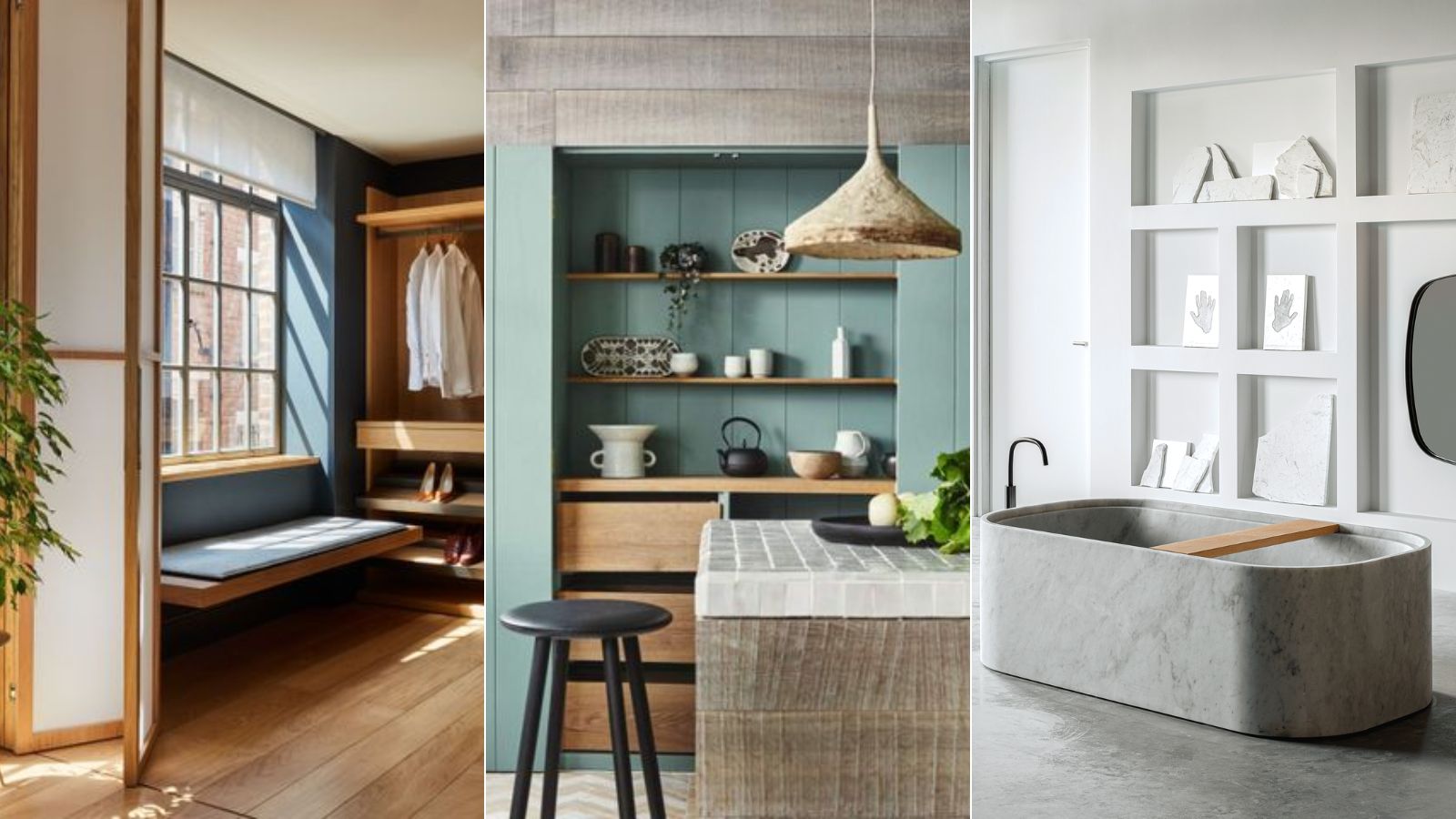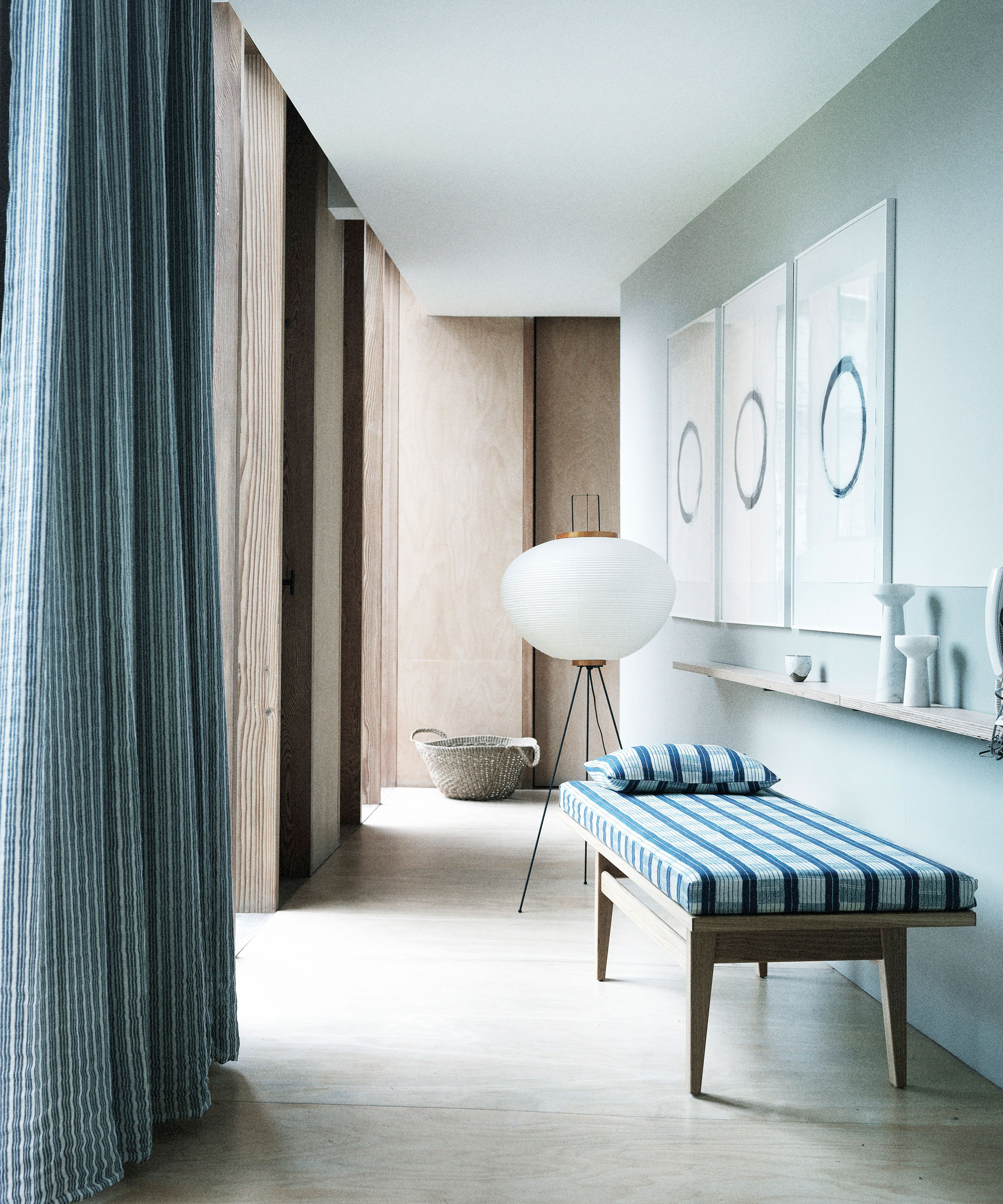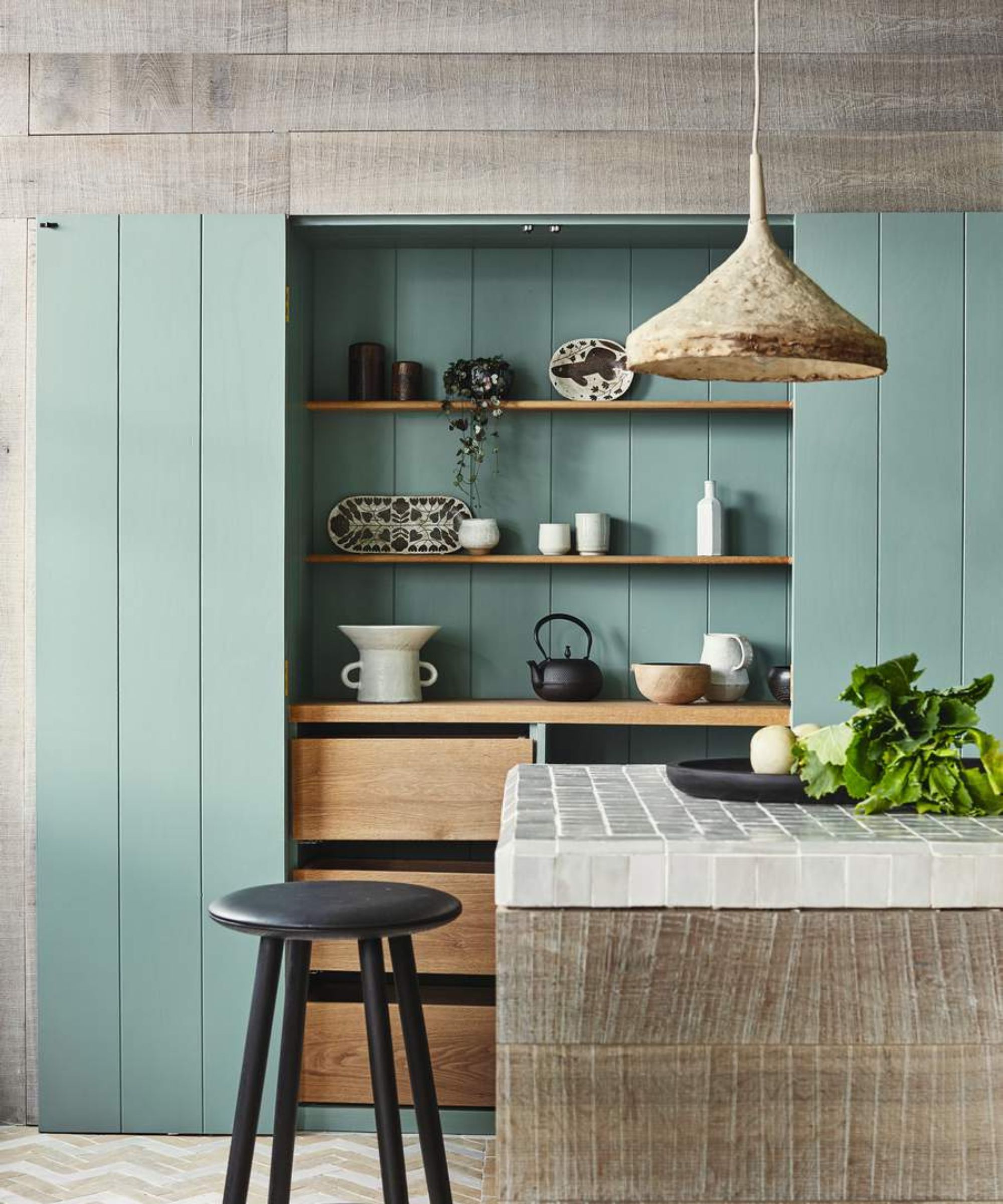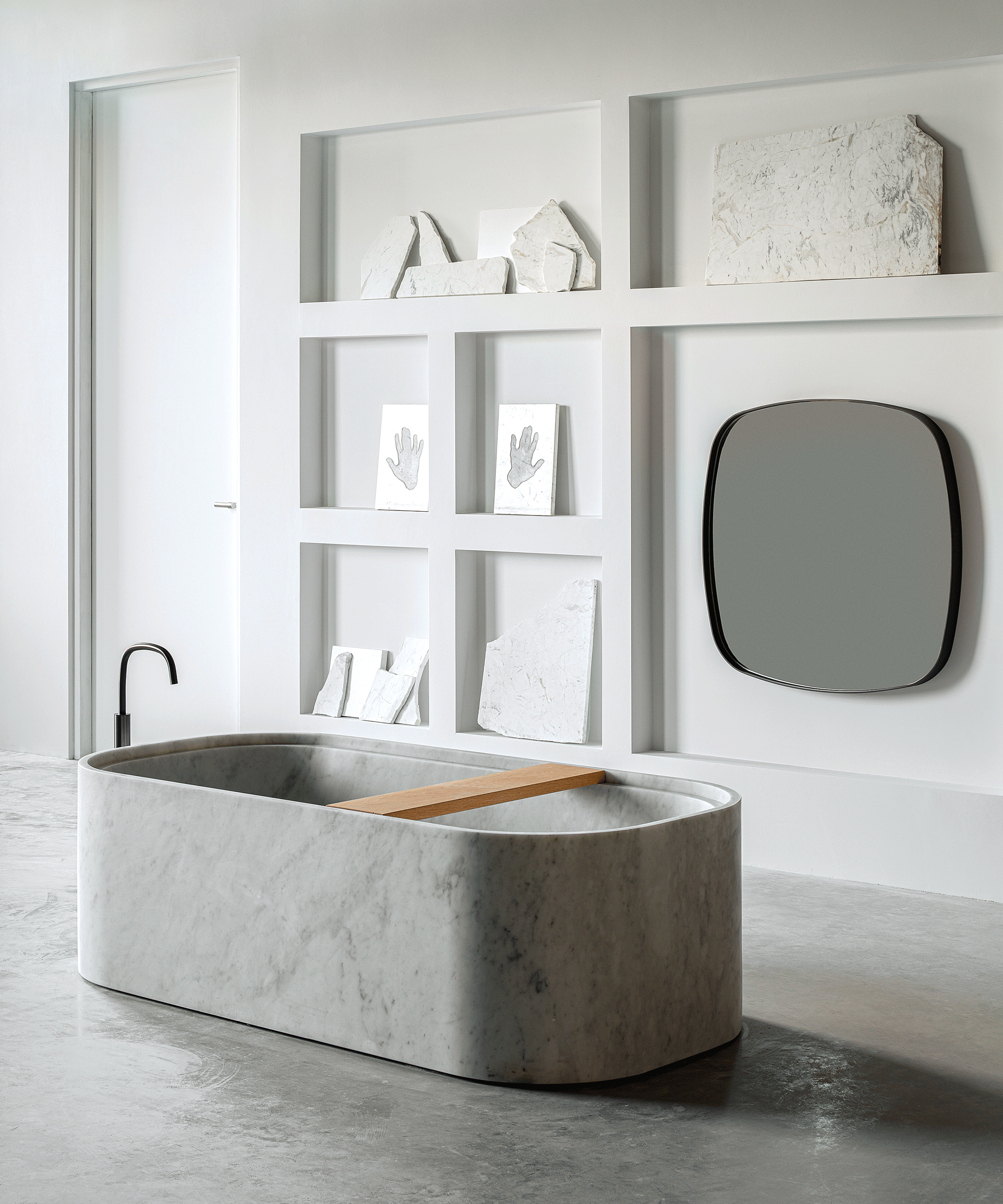
Japanese organizing techniques are renowned for bringing order and harmony into living spaces by prioritizing mindful minimalism and functionality.
These techniques emphasize joy in simplicity and thoughtful decluttering, allowing you to organize your home and create an atmosphere that supports your mental and physical health.
Following these methods and expert tips can help you renew your space and refresh your mind through thoughtful home organization, decluttering, and cleaning.
Japanese organizing techniques
These techniques go beyond mere tasks; they serve as transformative rituals. Japanese organizing, decluttering, and cleaning techniques are well known for their careful balance of simplicity and pragmatism.
1. Ma

'Drawing from Japanese minimalist principles, I suggest creating spaces that promote serenity and declutter the mind,' says Yuuna Morishita, Wellness Advocate at The Japanese Way.
'Start by embracing the concept of 'Ma', the intentional use of space that values emptiness as much as fullness. In practice, this means clearing any non-essential items and furnishing sparsely, which allows for a more thoughtful and calming environment.'
When organizing your home, the 'Ma' technique encourages:
- Decluttering to remove unnecessary items, allowing for a more open space.
- Incorporating negative space by creating intervals between objects to allow the eye to rest.
- Achieving spatial balance by arranging furniture in a way that balances the space. To do this, avoid overcrowding, leaving enough open areas to create a sense of flow. This also applies to creating open pathways within a room.
- Creating functional zones in a space.
2. KonMari

The KonMari method by Marie Kondo is a decluttering and organizing technique that emphasizes prioritizing items that spark joy and decluttering the rest. This is a systematic process by which items are addressed in their categories to create a living space that is not only organized but also aligned with your values to bring a sense of joy and harmony.
To start, imagine your ideal lifestyle. 'Think about what kind of house you want to live in and how you want to live in it. Give some thought to what you want out of life,' says Amélie Saint-Jacques, certified KonMari consultant and professional organizer at Amelie Organizes LLC. 'In other words, consider which items will contribute to shaping the ideal environment you want to live in, and let go of the others with gratitude.'
By doing this, decluttering should naturally take place as you address each category of items, determining what you want to keep, and by default, what you do not.
'Only once you know which objects you are keeping can you decide how to store them properly,' says Amélie Saint-Jacques. 'Remember to tidy by category, not by location. Tidying by category allows you to grasp the overall volume of things you own, letting you make better decisions about what to keep. It also prevents you from repeating the same work in several locations.
'Furthermore, tidying your belongings in this order – clothes, books, papers, komono [miscellaneous items], and sentimental items – has proven to be the most efficient and effective. That’s because you’re working from easiest to hardest, honing your ability to make decisions along the way'.
3. Danshari

Danshari is the art of decluttering to simplify and detach from unnecessary possessions. This was invented by Hideko Yamashita, a Japanese decluttering expert, and is structured by three Japanese words/characters, which represent three stages in this process:
1. Dan (Refuse): Make a clear decision to declutter and detach from unnecessary items. This process is about breaking free of attachment to material possessions.
2. Sha (Dispose): Next, get rid of items you have identified in the 'dan' stage as unnecessary. This step is to let go of possessions that no longer serve a purpose or bring joy.
3. Ri (Separate): Separate from your attachment to the material possession. This idea of detaching from sentimental clutter involves developing a mindset that values experiences and relationships over material belongings.
This technique is about simplifying your living space to create a more fulfilling and harmonious environment. This aligns with minimalistic living, creating a more intentional and clutter-free lifestyle.
4. Oosouji

Oosouji is the cleaning and organizing technique to welcome the New Year with a fresh start, and is meant to cleanse the home and the mind, acting as a way to achieve mental order through physical order and the therapeutic act of cleaning.
The cultural significance of Oosouji is that it is negative to let unfinished business linger, so this is the perfect opportunity to reassess for a positive new beginning. This task would traditionally be done on the 28th of December (but there is nothing stopping you from practicing it year-round).
To use this technique, begin by creating a clear plan. Identify areas of your home that require attention, and plan tasks in order of importance and urgency.
1. Declutter room by room, donating, recycling, or disposing of items you no longer need or use.
2. Deep clean, paying special attention to hard-to-reach and often neglected areas.
3. Organize your home, arranging items tactically to maximize accessibility and space. Evaluate your furniture arrangement and optimize the layout for better flow and functionality. This may also require reevaluating your storage ideas and adopting effective minimalist storage solutions to maintain a clutter-free space.
5. 5S

The 5S method represents five Japanese words, each starting with the letter "S", which represent different principles of organizing and maintaining a productive work environment:
1. Seiri (Sort): Go through what you have and get rid of things you don't need, keeping only what is essential.
2. Seiton (Set in order): Organize what's left logically and efficiently.
3. Seiso (Shine): Clean and inspect everything thoroughly. This should be done both regularly and on a schedule.
4. Seiketsu (Standardize): Figure out easy ways to keep the space organized long-term. This can be done by establishing standardized processes and procedures for maintaining an ordered space.
5. Shitsuke (Sustain): Stick to those habits until they feel normal. This means practicing discipline to sustain organized and efficient practices long-term.
When done room by room, 5S creates a systematic approach to organizing your home.
FAQS
What is Wabi-sabi?
Wabi-sabi is a Japanese philosophical view based on the acceptance and beauty of imperfection, transience, and simplicity. It means appreciating the authenticity of objects and embracing their flaws rather than constantly purchasing new, flawless items.
Wabi is associated with finding beauty in the understated, relating to the natural world. Sabi is related to the passage of time and beauty that comes with age and wear. This relates to the natural cycle of growth and decay.
These techniques offer a holistic and mindful approach to organizing, cleaning, and promoting a balanced lifestyle. While completing these tasks may be a tiring process, these principles aim to renew and reinvigorate spaces, leading to a positive impact on the mind.







